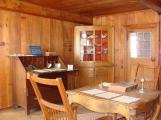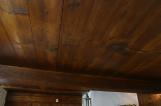14
Layout of first floor20th century, circa 1982
Batiscan (Quebec), Canada
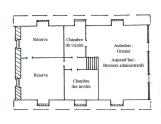 Credits:
Credits:Le Vieux Presbytère de Batiscan "Histoire et architecture" (R. Traquair and A.G. Neilson, 1982)
15
THE HALL
The main entrance leads into the hall, which served as Father Fréchette's office. The hall is also a ceremonial space and can sometimes double as a dining room to host special guests.
16
Entrance hall19th century, circa 1816
Batiscan (Quebec), Canada
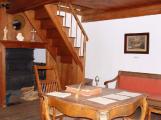 Credits:
Credits:Archives of the Fondation des Amis du Vieux presbytère de Batiscan
18
Drop-front desk19th century, circa 1800
Batiscan (Quebec), Canada
 Credits:
Credits:Collection of the Musée national des beaux-arts du Québec
Idra Labrie
19
Corner cabinet19th century, circa 1800
Batiscan (Quebec), Canada
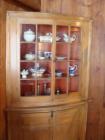 Credits:
Credits:Collection of the Musée de la civilisation
Archives of the Fondation du Vieux presbytère de Batiscan
20
THE KITCHEN
With the exception of the community hall, this was the largest room on the ground floor. It also held the biggest hearth of the building and a floor trap leading into the cellar. Traces of soot on the ceiling and walls indicate that cooking and heating instruments were mostly used in this room.
21
Kitchen19th century, circa 1816
Batiscan (Quebec), Canada
 Credits:
Credits:Archives of the Fondation des Amis du Vieux presbytère de Batiscan
22
Kitchen19th century, circa 1816
Batiscan (Quebec), Canada
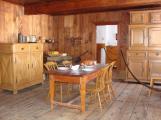 Credits:
Credits:Archives of the Fondation des Amis du Vieux presbytère de Batiscan
25
The kitchen was without a doubt the busiest room. Besides being Adeline's workplace, it was also where the occupants would eat and spend a part of the evening.
26
THE CELLAR
The cellar served as a pantry. The beaten earth floor, as well as the thickness of the stone foundations, kept the room cool and helped preserve food. Smoked meat, bushels of apples and barrels of vegetables were stored in the cellar and garlic braids and bunches of herbs hung from the ceiling.
27
Cellar19th century, circa 1816
Batiscan (Quebec), Canada
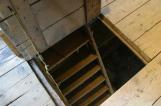 Credits:
Credits:Archives of the Fondation des Amis du Vieux presbytère de Batiscan
